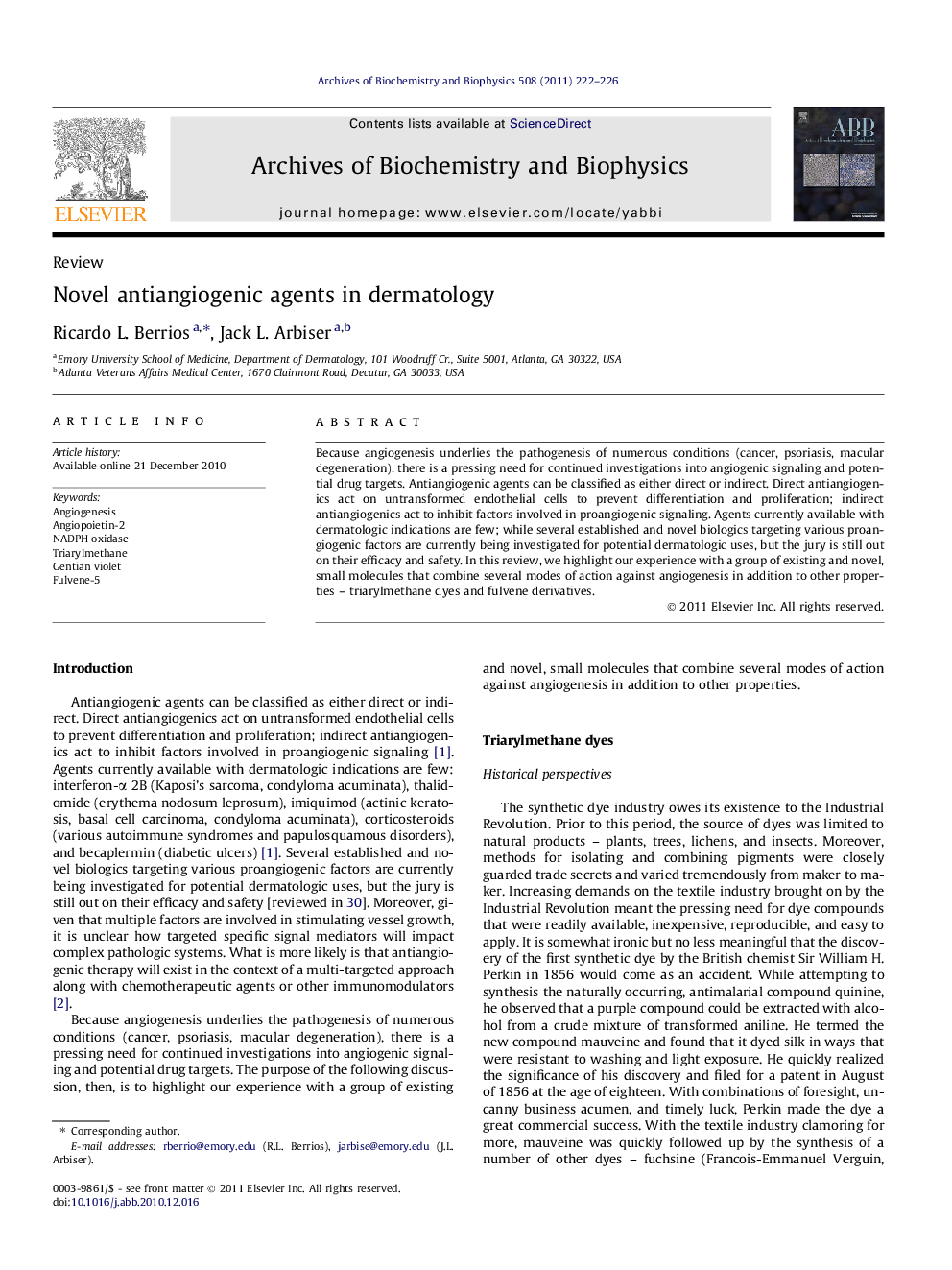| Article ID | Journal | Published Year | Pages | File Type |
|---|---|---|---|---|
| 1925784 | Archives of Biochemistry and Biophysics | 2011 | 5 Pages |
Because angiogenesis underlies the pathogenesis of numerous conditions (cancer, psoriasis, macular degeneration), there is a pressing need for continued investigations into angiogenic signaling and potential drug targets. Antiangiogenic agents can be classified as either direct or indirect. Direct antiangiogenics act on untransformed endothelial cells to prevent differentiation and proliferation; indirect antiangiogenics act to inhibit factors involved in proangiogenic signaling. Agents currently available with dermatologic indications are few; while several established and novel biologics targeting various proangiogenic factors are currently being investigated for potential dermatologic uses, but the jury is still out on their efficacy and safety. In this review, we highlight our experience with a group of existing and novel, small molecules that combine several modes of action against angiogenesis in addition to other properties – triarylmethane dyes and fulvene derivatives.
Research highlights► Angiogenesis is a complex process involving multiple signaling pathways. ► Antiangiogenic agents can either be direct or indirect. ► Targeted antiangiogenic therapy will likely have to occur in the context of a multifaceted approach. ► Triarylmethane dyes are historic drugs with anti-inflammatory and antiangiogenic properties. ► Fulvene-5 acts in similar ways to triarylmethane dyes but is more soluble and better tolerated.
